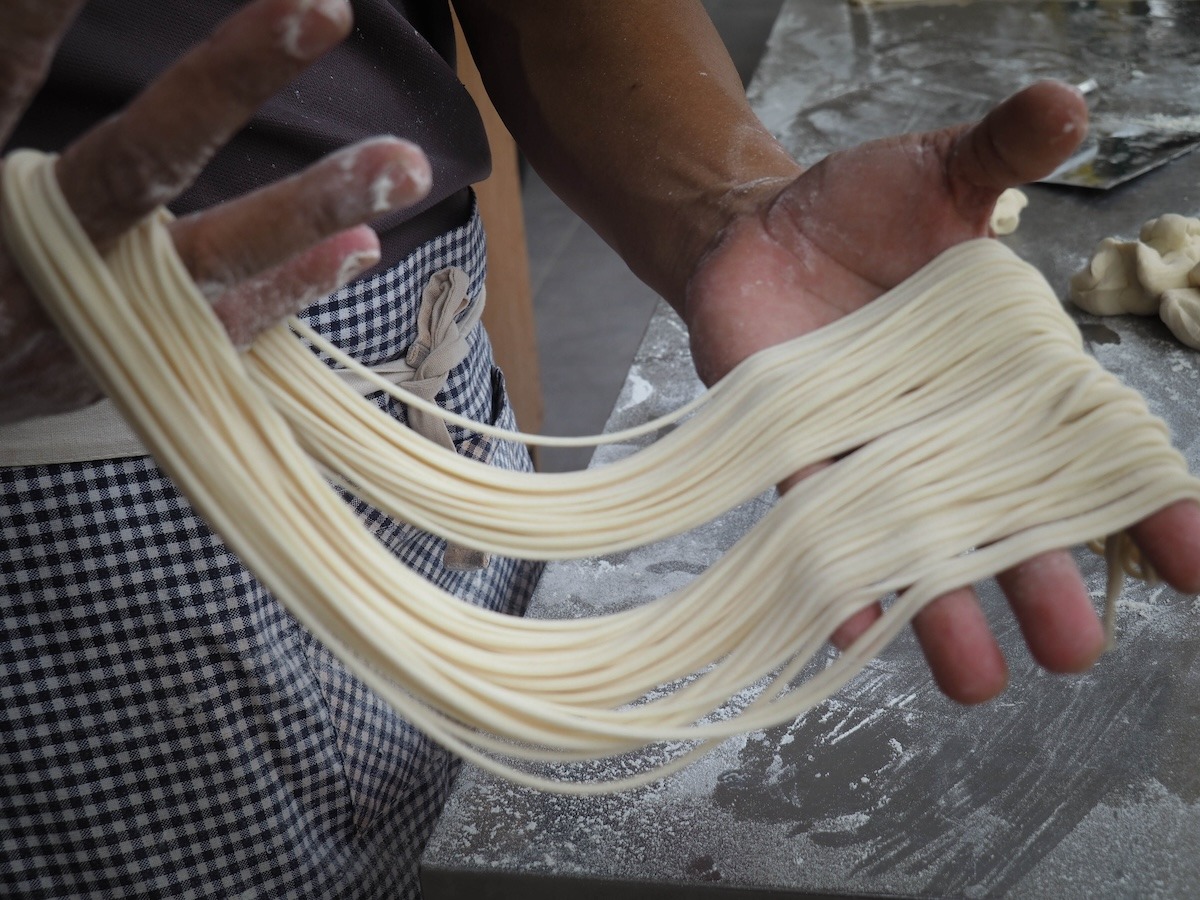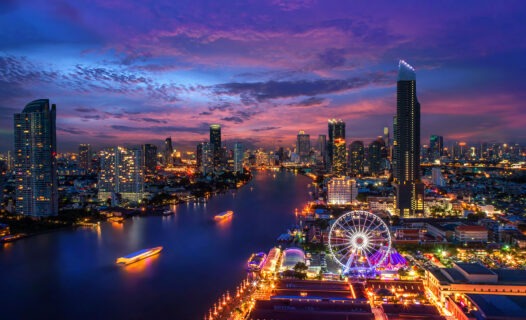Kuala Lumpur, a city known for its vibrant food culture, offers a myriad of culinary delights. Among these, Mee Tarik, or hand-pulled noodles, stands out as a testament to traditional culinary craftsmanship. One of the best places to dive into this gastronomic adventure is the bustling Central Market. Let’s embark on a flavorful journey to discover the art of Mee Tarik, its rich traditions, and the cultural tapestry that makes it a must-try dish in Kuala Lumpur.
The Tradition of Mee Tarik
Hand-pulled noodles, known as Mee Tarik, are a staple in Chinese cuisine and have a unique place in Malaysian culinary culture. The process involves kneading dough, stretching it by hand, and twisting it repeatedly until it forms uniform strands of noodles. This age-old technique is not just about creating delicious noodles but also about preserving a tradition that dates back centuries.
In Kuala Lumpur’s Central Market, you can witness this remarkable process live. Several stalls and restaurants here proudly display their noodle-making skills, offering a fascinating glimpse into the meticulous craft of Mee Tarik.
Day-by-Day Itinerary
Day 1: Arrival and Initial Exploration
On the first day, begin your Kuala Lumpur trip by exploring the Central Market. Get a feel of the market’s layout, check out the various stalls, and pinpoint the noodle stalls where you’ll indulge in Mee Tarik. Don’t forget to relish the initial servings of these hand-pulled noodles to get a taste of what’s to come.
Day 2: Cultural Immersion and Culinary Classes
Dedicate the second day to immersing yourself in the local culture. Visit stalls that not only sell Mee Tarik but also run cooking classes. Engage in a noodle-making class where you can learn the ancient techniques of kneading and stretching dough. It’s an interactive way to understand the skill and effort involved in making Mee Tarik.
Day 3: Local Attractions and Street Food Tour
Take a break from noodle-making on the third day by exploring the nearby attractions. Visit the Sri Mahamariamman Temple, the oldest Hindu temple in Kuala Lumpur. Then, head back to Central Market for a street food tour that focuses on Chinese and Malaysian delicacies. Besides Mee Tarik, tantalize your taste buds with satays, dumplings, and other street food wonders.
Day 4: Historical Context and More Culinary Delights
Spend the fourth day understanding the historical context of the Central Market and its role in Kuala Lumpur’s history. This market, which started as a wet market in 1888, has evolved into a cultural and culinary hub over the years. After soaking in the historical vibes, enjoy more Mee Tarik and explore different preparations and flavors.
Day 5: Personal Traveler Stories and Local Voices
On the fifth day, engage with local stall owners and other travelers to hear personal stories and experiences. Many travelers have cherished memories linked to Mee Tarik and Central Market. Listening to these stories can enhance your understanding of the cultural significance and the sentimental value of this culinary experience.
Day 6: More Culinary Exploration and Relaxation
Continue your culinary exploration on the sixth day by seeking out hidden gems within the Central Market. Relax at cafes or tea houses that offer traditional Malaysian beverages to complement your noodles. Make sure you also explore the art and craft stalls within the market to pick up souvenirs.
Day 7: Final Exploration and Departure
On your final day, revisit your favorite stalls and savor one last bowl of Mee Tarik. Perhaps try a different style or topping that you haven’t had yet. Reflect on your culinary journey and the rich history and traditions you have become a part of. As you prepare to depart, make plans to return and explore more of Kuala Lumpur’s culinary offerings.
Culinary Deep Dive
Mee Tarik is not just about the noodles; it is also about the rich, flavorful broths, and the variety of toppings that accompany the noodles. Different stalls and restaurants have their unique styles, broth recipes, and toppings, making every bowl of Mee Tarik a new experience.
Common toppings include sliced beef, chicken, shrimp, and vegetables, while the broths can range from rich, savory beef broths to lighter, clear broths. Some versions incorporate spicy elements, providing a delightful kick for those who enjoy a bit of heat in their meals.
Practical Information for Travelers
Central Market is located in the heart of Kuala Lumpur, making it easily accessible by public transport. The market is open daily, from morning until late evening. For the best experience, visit during off-peak hours to avoid the crowds and have a more relaxed dining experience.
When visiting Central Market, it’s advisable to carry cash, as not all stalls may accept card payments. The market is a great place not just for food but also for arts and crafts, so take the time to explore the various shops selling traditional Malaysian handicrafts.
Accommodation options near Central Market are plentiful, ranging from budget-friendly hotels to more luxurious options. Some recommended hotels include the Avenue J Hotel Central Market and the Leo Leisure Hotel, both offering easy access to the market.
Sustainability and Conservation Focus
As you explore the culinary delights of Kuala Lumpur, it’s important to do so responsibly. Opt for stalls and restaurants that prioritize sustainability, such as those using locally sourced ingredients. Reduce your carbon footprint by using public transport to visit Central Market and other attractions.
Support local businesses and artisans by purchasing handmade crafts and souvenirs. This not only helps the local economy but also preserves traditional crafts and culinary practices.
In conclusion, exploring Mee Tarik in Kuala Lumpur’s Central Market is more than just a culinary journey—it’s an immersion into the rich cultural and historical tapestry of Malaysia. From learning the ancient art of noodle-making to savoring the diverse flavors, every moment is an adventure. So, pack your bags, ready your taste buds, and embark on a journey to discover the magic of Mee Tarik in the heart of Kuala Lumpur.





















